15 Regional Food Traditions That Might Surprise You
Food is an essential part of every culture, and regional food traditions offer a unique insight into the history and flavors of different areas. From savory sandwiches to mouthwatering street foods, these local dishes often surprise and delight with their unexpected combinations and rich flavors. Many of these foods are deeply rooted in tradition, passed down through generations and celebrated by locals. Some might be familiar to those living nearby, but are relatively unknown outside of their home regions.
This post may contain affiliate links, which helps keep this content free. Please read our disclosure for more info.
The Spiedie – Binghamton, New York

The Spiedie is a local specialty from Binghamton, New York, that involves marinated meat, usually chicken, pork, or lamb, which is skewered and grilled. What makes this dish unique is its preparation method, where the meat is marinated in a blend of oil, vinegar, and a variety of herbs and spices for at least 24 hours. This marinade helps tenderize the meat while imparting rich flavors. Once marinated, the skewered meat is grilled until perfectly charred and served in a soft roll.
Though it sounds simple, the Spiedie has gained widespread popularity in the region, and annual festivals are dedicated to it. The flavor-packed meat is often enjoyed with a range of toppings, such as lettuce, tomatoes, and even local hot sauce, making it a beloved and versatile dish in the area. Locals enjoy it during the summer months when outdoor grilling is at its peak, but it’s a staple in regional cuisine year-round.
The St. Paul Sandwich – St. Louis, Missouri

The St. Paul Sandwich is a quirky creation from St. Louis, Missouri, that blends Chinese and American culinary traditions. It consists of an egg foo young patty, a Chinese dish made from scrambled eggs and vegetables, served in between two slices of white bread. The sandwich is then topped with mayonnaise and pickles, creating a surprisingly delicious and comforting meal.
This sandwich is an example of “Chinese-American” fusion cuisine and was created by Chinese immigrants in St. Louis. It is not commonly found outside the region, making it a true local delicacy. The dish has a devoted fanbase, often being served for lunch or dinner, and its unusual combination of ingredients is a fun and tasty twist on the traditional sandwich.
The Bobbie – Delaware

The Bobbie is Delaware’s answer to the Thanksgiving sandwich. Made with turkey, stuffing, cranberry sauce, and mayonnaise, this sandwich captures the essence of a traditional Thanksgiving meal, but in a portable form. Served on a soft roll, the turkey is the star, complemented by the savory stuffing and the sweet-tart flavor of the cranberry sauce. The mayo ties everything together, making it a satisfying meal any time of the year.
While the Bobbie may sound like a simple creation, it holds a special place in Delaware’s culinary culture. It was invented by a local deli and quickly became a favorite among residents. Its popularity has spread throughout the region, and it is often enjoyed by those who seek a taste of Thanksgiving beyond the holiday itself.
The Po’ Boy – New Orleans, Louisiana
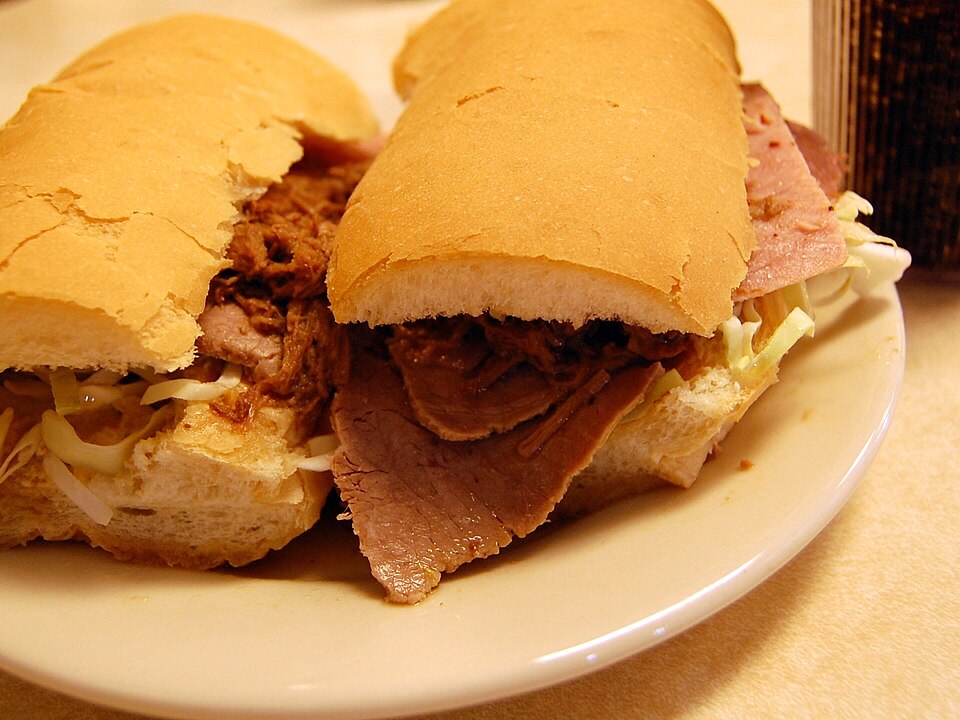
The Po’ Boy is a classic sandwich originating from New Orleans, Louisiana. Traditionally made with fried shrimp or oysters, the sandwich is served on a crusty French baguette with lettuce, tomatoes, pickles, and mayonnaise. The fried seafood is the star, delivering a crispy and flavorful bite, while the crunchy bread and fresh vegetables provide balance and texture.
This sandwich has historical roots dating back to the 1920s, when it was created by a New Orleans restaurant owner to feed striking workers. Over the years, the Po’ Boy has evolved to include a variety of fillings such as roast beef, sausage, or even soft-shell crab, making it a versatile and beloved local dish. Whether served in a casual restaurant or a high-end eatery, the Po’ Boy remains an iconic part of New Orleans’ food culture.
The Chacarero – Chile
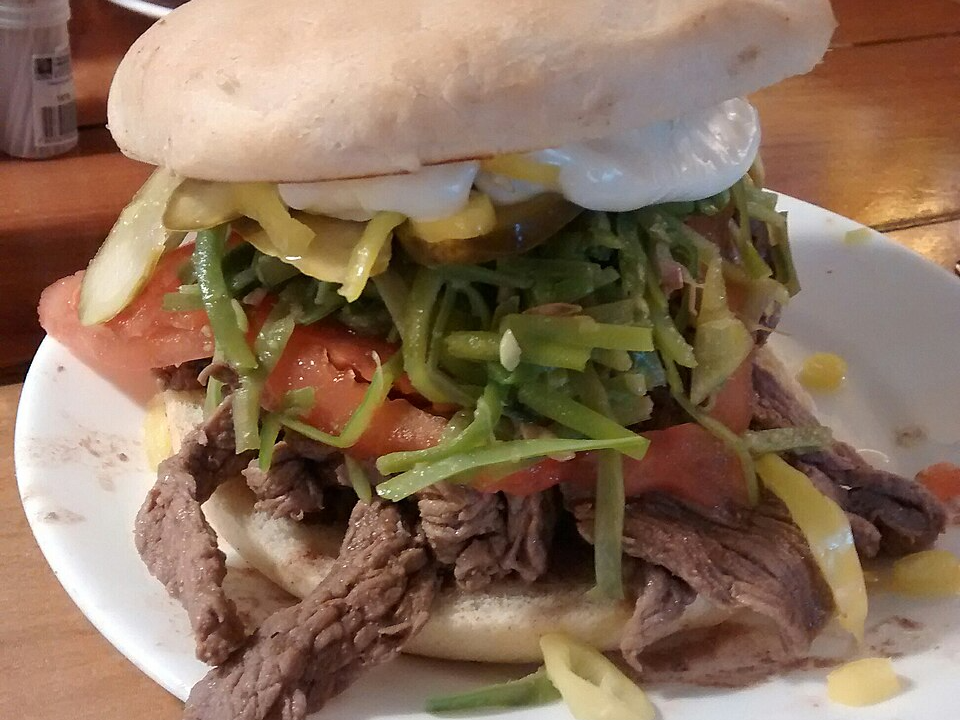
The Chacarero is a traditional Chilean sandwich that showcases the country’s agricultural roots. Made with thinly sliced grilled beef or chicken, it’s packed with fresh ingredients like avocado, tomatoes, green beans, and a special spicy sauce. The sandwich is typically served on a round bread called “marraqueta,” which has a crunchy crust and soft interior, making it the perfect base for this hearty filling.
What makes the Chacarero stand out is the inclusion of green beans, a vegetable not commonly found in sandwiches. This adds a fresh, crisp texture that contrasts beautifully with the richness of the meat and avocado. It’s a popular lunchtime meal in Chile, often enjoyed in both casual eateries and food stalls.
The Croque-Monsieur – France
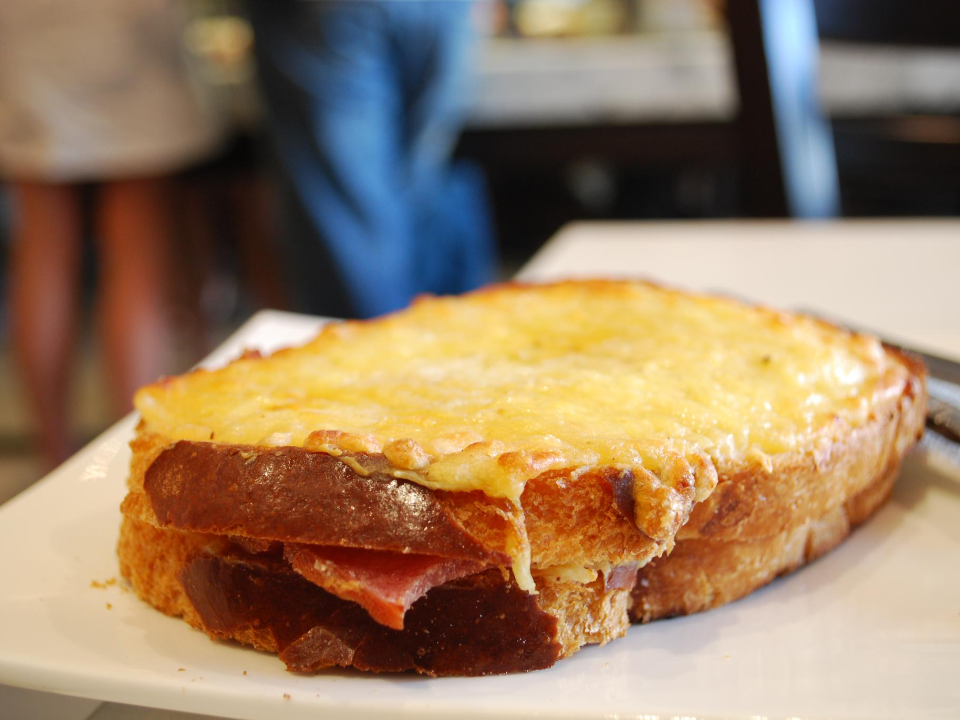
The Croque-Monsieur is a classic French sandwich known for its rich and indulgent flavor. Made with layers of ham and Gruyère cheese between two slices of buttered white bread, the sandwich is grilled to golden perfection, often with a creamy béchamel sauce added for extra richness. The combination of melted cheese, salty ham, and crispy bread makes for a truly comforting meal.
In France, the Croque-Monsieur is a beloved bistro dish often enjoyed with a side of salad or soup. It is typically served at lunch but can also be found in cafes as a snack or breakfast item. For a variation, it can be turned into a Croque-Madame by adding a fried egg on top, giving it an extra layer of flavor and texture.
The Arepa – Venezuela and Colombia

The Arepa is a versatile and beloved dish from both Venezuela and Colombia. Made from cornmeal dough, this round, flatbread can be grilled, baked, or fried. Arepas are often split open and filled with a wide range of ingredients, including cheese, meats, beans, and avocado. They are a staple of both countries’ breakfasts and can be customized to suit different tastes.
In Venezuela, the Arepa is often filled with shredded beef or chicken, cheese, and black beans. In Colombia, it’s more common to see it served with cheese or egg, making it a simple yet satisfying meal. No matter the filling, the Arepa has remained a central part of the daily diet in both nations, providing a warm, comforting base for any number of fillings.
The Loco Moco – Hawaii

The Loco Moco is a comforting and hearty dish that originated in Hawaii. It consists of a bed of rice topped with a hamburger patty, a fried egg, and brown gravy. While it may sound simple, the combination of ingredients delivers a flavorful and filling meal that can be enjoyed for breakfast, lunch, or dinner. The gravy adds a savory richness that ties everything together, making the Loco Moco a favorite among locals.
This dish became popular in Hawaii in the 1940s and has since become a staple in local diners and comfort food joints. While the basic Loco Moco remains unchanged, variations exist, with some versions including additional ingredients like sautéed onions or vegetables. It remains a beloved part of Hawaiian cuisine, embodying the island’s love for hearty, satisfying meals.
The Banh Mi – Vietnam

The Banh Mi is a Vietnamese sandwich that brings together traditional Vietnamese ingredients with French influences. Typically served on a baguette, this sandwich is filled with a variety of meats, such as pork, chicken, or beef, along with fresh vegetables like cilantro, cucumbers, and pickled carrots. A spread of mayonnaise or pâté adds richness, while chili peppers provide a kick of heat.
What makes the Banh Mi special is the combination of flavors and textures that come from both Vietnamese and French culinary traditions. The crunchy baguette provides the perfect contrast to the tender, flavorful fillings, making it a satisfying meal. The sandwich has become widely popular around the world, especially in cities with large Vietnamese communities, and is often enjoyed as a quick and tasty lunch.
The Poutine – Canada
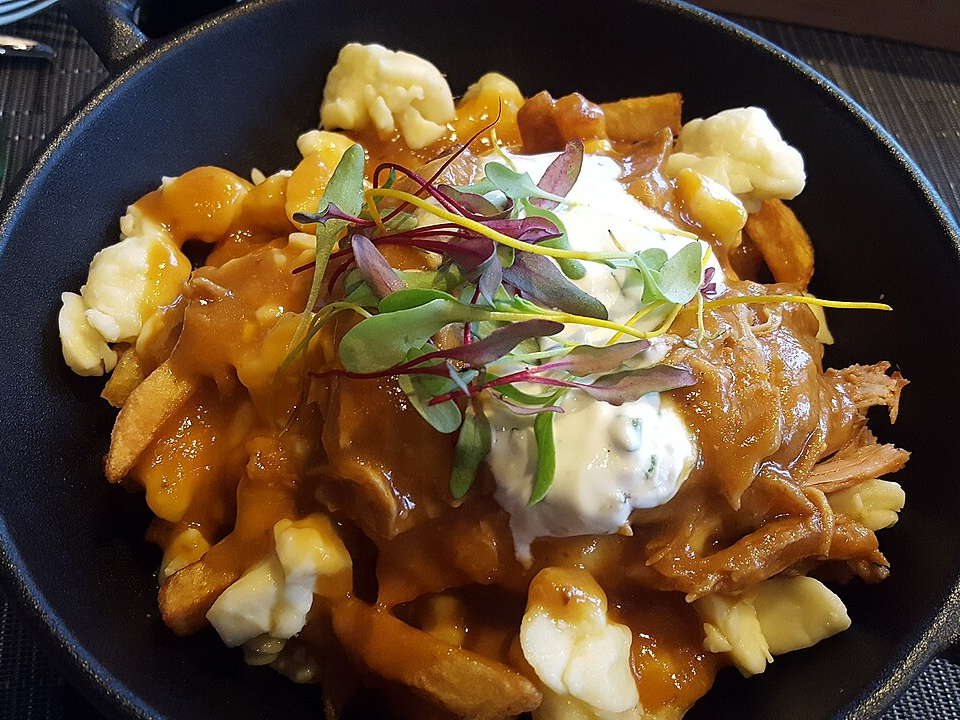
Poutine is a beloved Canadian dish made up of French fries topped with cheese curds and smothered in gravy. Originating in Quebec, this comfort food is known for its rich, indulgent flavors. The cheese curds, which remain slightly firm even when hot, provide a satisfying texture that complements the crispy fries and savory gravy.
The dish has evolved over the years, with many variations now available that include different types of meats or additional toppings like mushrooms or onions. Despite its humble beginnings as a diner dish, Poutine has become a symbol of Quebecois culture and is enjoyed across Canada. It is especially popular as a late-night snack or after a long day, offering the perfect balance of saltiness and richness.
The Jambalaya – Louisiana, USA
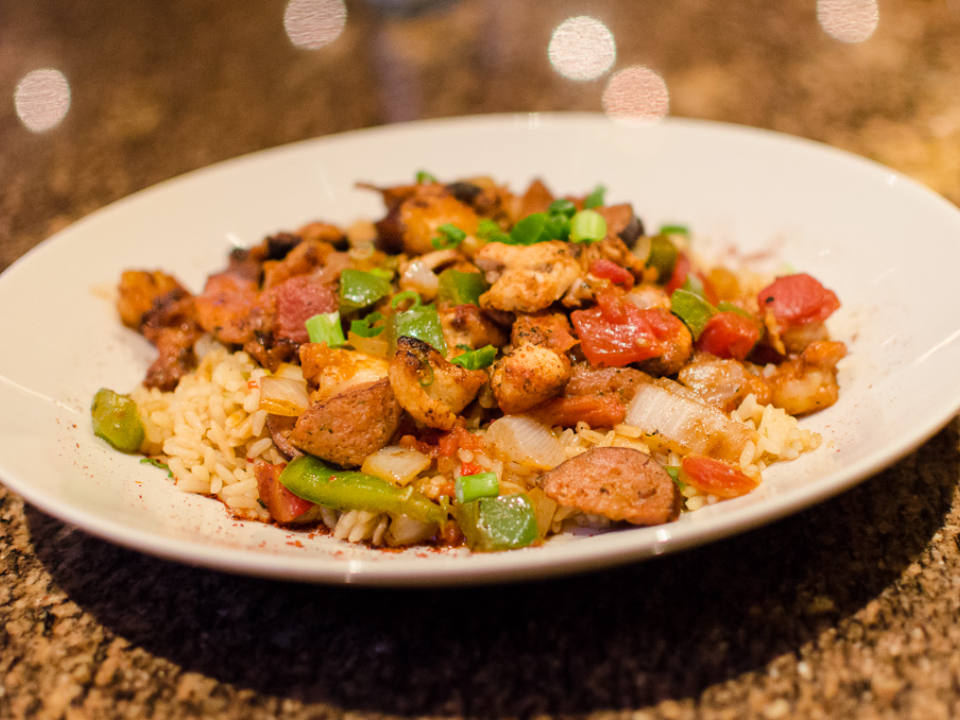
Jambalaya is a flavorful and filling rice dish from Louisiana that brings together a mix of ingredients like sausage, chicken, shrimp, and vegetables. The dish is made by cooking all the ingredients together with rice, creating a one-pot meal full of rich flavors. It is seasoned with a variety of spices, including paprika, cayenne, and thyme, giving it a distinct Creole flavor profile.
Originally from Louisiana, Jambalaya has deep roots in Creole and Cajun cuisines. It is often served at family gatherings, festivals, and celebrations, making it a dish that brings people together. Over time, variations of Jambalaya have emerged, with some featuring only seafood or sausage, while others include additional vegetables or beans.
The Ramen – Japan
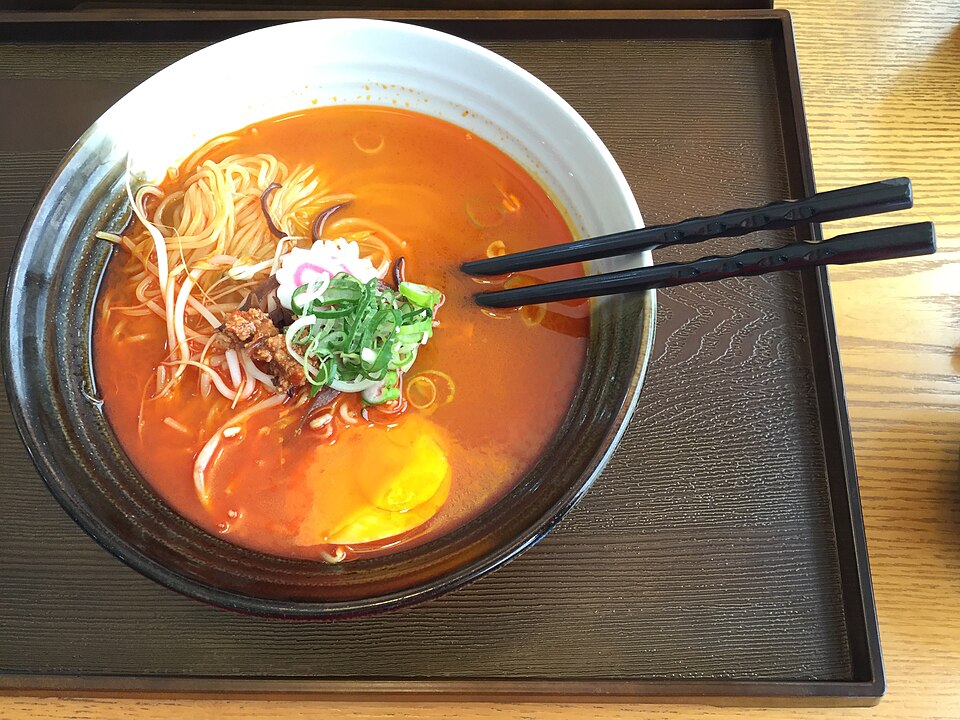
Ramen is a beloved noodle soup that has evolved into many regional variations across Japan. At its core, it consists of Chinese-style wheat noodles served in a rich broth, usually made from pork, chicken, or miso, and topped with ingredients like sliced pork, soft-boiled eggs, and green onions. The dish was influenced by Chinese cuisine but has become an iconic part of Japanese food culture.
Different regions in Japan serve ramen with their own twist, whether it’s the miso-based ramen from Sapporo or the soy-sauce-based ramen from Tokyo. The variety of broths and toppings gives ramen an endless range of flavors and textures, making it a dish loved by many around the world. It’s often served as a quick and satisfying meal in Japan, and ramen shops can be found in almost every corner of the country.
The Fufu – West Africa
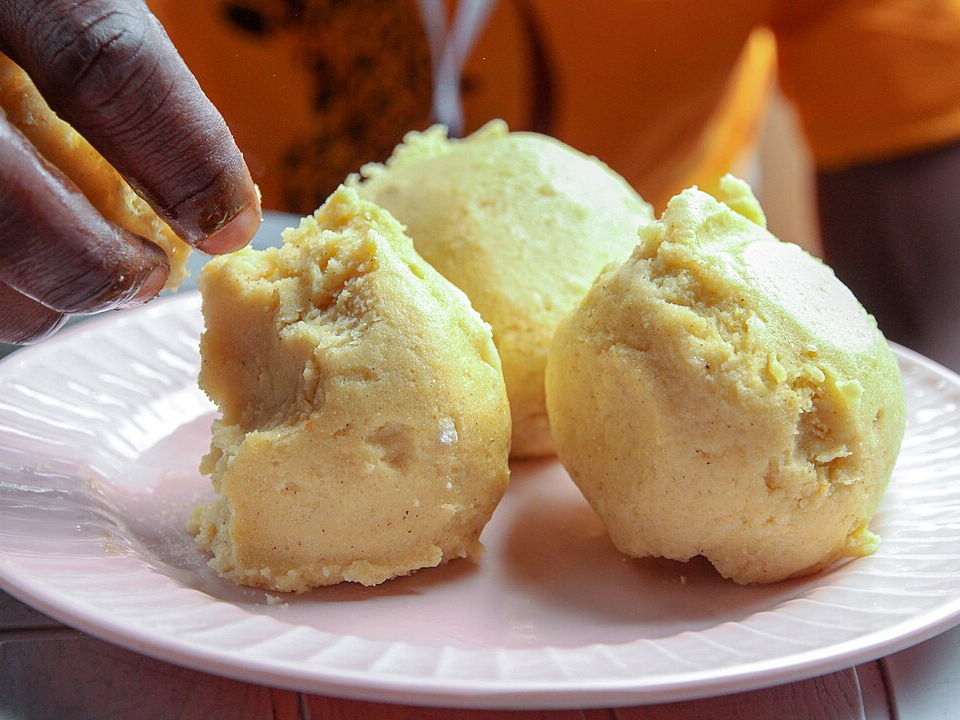
Fufu is a traditional dish from West Africa made by pounding starchy vegetables like cassava, yams, or plantains into a smooth, stretchy dough-like consistency. It is commonly served alongside soups or stews, allowing the fufu to soak up the rich and flavorful broths. Fufu is a staple in countries like Ghana, Nigeria, and Cameroon, where it is enjoyed as a comforting meal, often shared among family or friends.
The preparation of fufu requires a great deal of effort, as the starchy vegetables must be boiled and then pounded until they achieve the desired texture. It’s typically eaten by tearing off pieces with your fingers and dipping them into the accompanying soup or stew. Fufu holds deep cultural significance in West African communities, symbolizing unity and tradition.
The Schnitzel – Austria
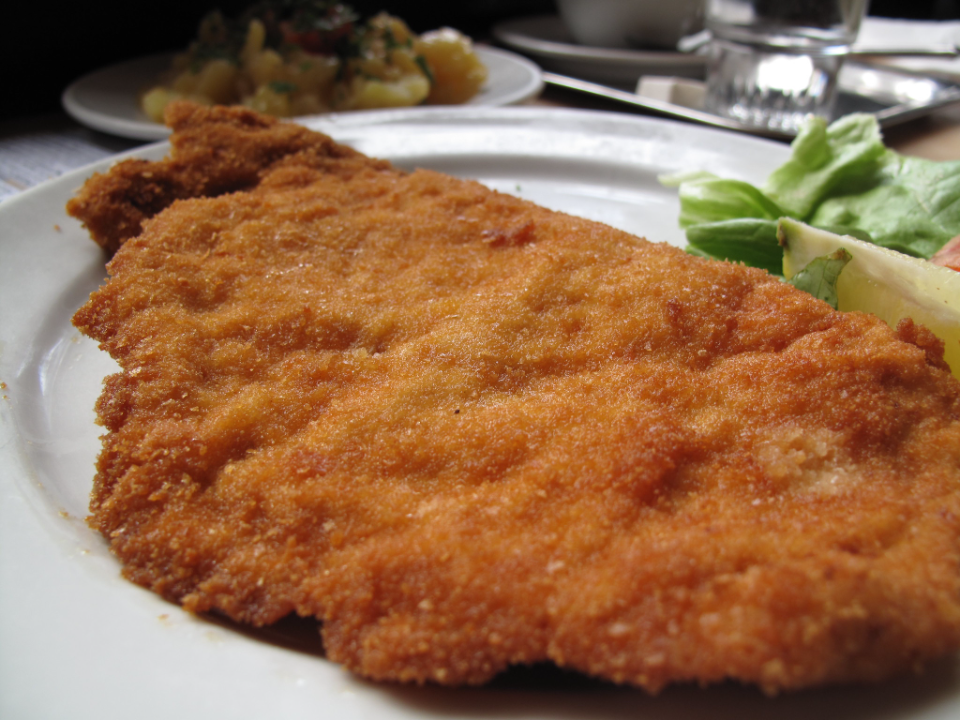
Schnitzel is a popular dish in Austria, made by breading and frying thin cuts of meat, typically veal or pork. The meat is seasoned with salt and pepper before being coated in flour, egg wash, and breadcrumbs, then fried until crispy and golden. It’s often served with a side of potato salad, lingonberry jam, or a fresh slice of lemon for extra flavor.
Schnitzel is a classic comfort food that has its roots in Austrian cuisine but has been adopted by many other countries. Variations include the famous Wiener Schnitzel, which is made with veal and is a symbol of Austrian national cuisine. Its crispy coating and tender interior make it a popular dish both in Austria and beyond, often enjoyed as a hearty and satisfying meal.
The Moussaka – Greece
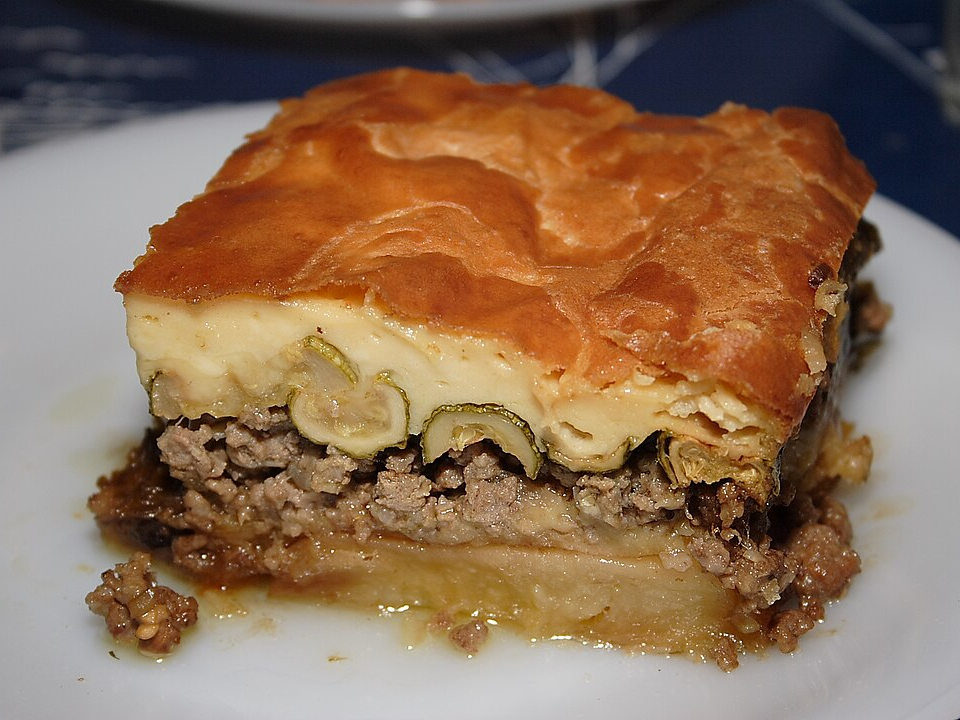
Moussaka is a traditional Greek dish made with layers of eggplant, minced meat (usually lamb or beef), and a creamy béchamel sauce. The dish is then baked to golden perfection, creating a hearty and comforting meal. The spiced meat filling is often seasoned with cinnamon, allspice, and garlic, which adds depth to the dish’s flavor profile.
Moussaka is often served during festive occasions and gatherings in Greece, although it is also a popular dish for home-cooked meals. Its layers of tender eggplant, rich meat, and creamy sauce make it a beloved dish in Greek cuisine. Similar versions of moussaka can also be found in other Balkan countries, each with its own slight variation on the ingredients and preparation methods.
This article originally appeared on Avocadu.
